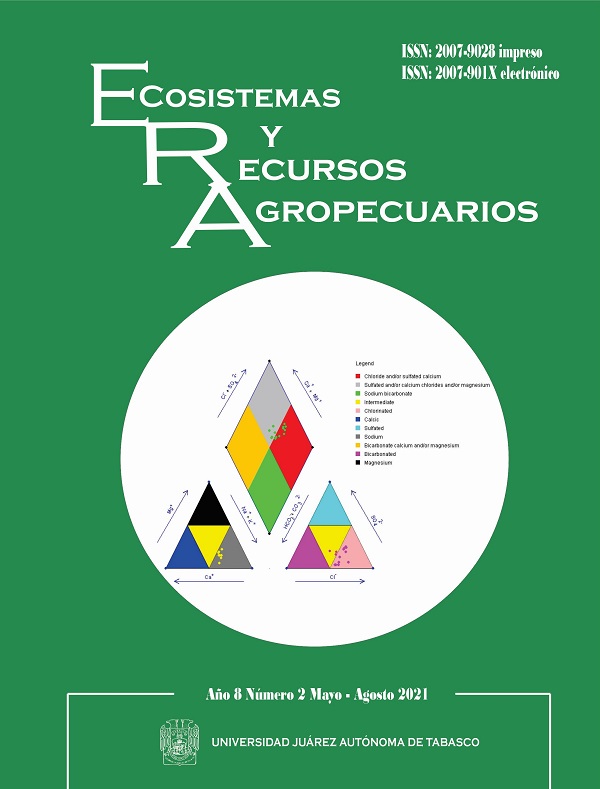Parasitosis and pesticide residues in honey and wax in bee colonies
Parasitosis y residuos de plaguicidas
DOI:
https://doi.org/10.19136/era.a8n2.2827Abstract
In recent years, a syndrome called Colony Collapse Disorder has been observed and among the main causative factors is exposure to pesticides and the presence of pests and diseases. In the Comarca Lagunera, Mexico, from 2010 to 2016 there was a 35 % decrease in bee colonies number. The purpose of this work was to determine and quantify the presence of pesticides in honey and wax samples, as well as to determine the prevalence and levels of infestation/infection of the main parasites in honey bee colonies that could be associated with this colonies losses. For two consecutive years, 132 and 125 samples of bees and honeycomb with honey and wax were obtained from the same number of colonies. To determine the pesticides only in the first year, 12 samples of honey and 12 samples of wax were analyzed; the pathogens were analyzed in all the samples of the two years. The greatest diversity of pesticides was detected in the wax. The intestinal parasite Nosema spp presented a 100 % prevalence, finding significant differences in the infection level, while the Varroa mite presented prevalences of 82.6 % and 79.2 % and not finding significant differences in the levels of infestation. The tracheal mite Acarapis woodi was not found in the analyzed samples. The results reflect that the presence of pesticides and pathogens contributed synergistically to the affectation of bees. More studies are required to know the individual importance of each factor that affects bee colonies in the region.
Downloads
Downloads
Published
Issue
Section
License
Copyright (c) 2021 Ecosistemas y Recursos Agropecuarios

This work is licensed under a Creative Commons Attribution-NonCommercial-ShareAlike 4.0 International License.
Aviso de copyright
Los autores que se envían a esta revista aceptan los siguientes términos:
una. Los autores conservan los derechos de autor y garantizan a la revista el derecho a ser la primera publicación del trabajo con una licencia de atribución de Creative Commons que permite a otros compartir el trabajo con un reconocimiento de la autoría del trabajo y la publicación inicial en esta revista.
B. Los autores pueden establecer acuerdos complementarios separados para la distribución no exclusiva de la versión del trabajo publicado en la revista (por ejemplo, en un repositorio institucional o publicarlo en un libro), con un reconocimiento de su publicación inicial en esta revista.
C. Se permite y se anima a los autores a difundir su trabajo electrónicamente (por ejemplo, en repositorios institucionales o en su propio sitio web) antes y durante el proceso de envío, ya que puede conducir a intercambios productivos, así como a una cita más temprana y más extensa del trabajo publicado. (Consulte El efecto del acceso abierto).

